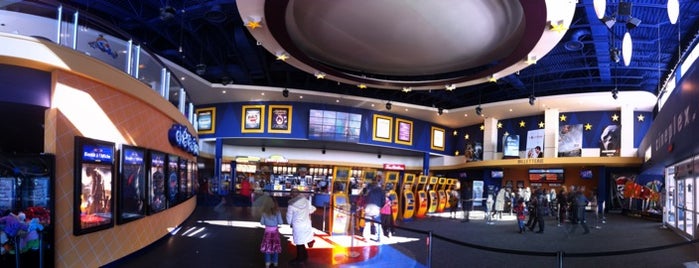

Without a doubt, 4D theaters seem poised to particularly cater to the experience of viewing action-packed films, as film goer Josh from /Film noted in his experience while watching Harry Potter and the Half-Blood Prince in D-Box (Sciretta). However, similar to arguments against 3D filmmaking, should the advent of 4D screenings be considered a gimmick? According to Bruce Greenberg, the Hollywood-based senior VP of CJ 4DPlex, “2D allows audiences to watch the movie, 3D allows them to really see the movie, but 4D now allows them to be immersed with the movie.” Demonstrating their strong trust in the opportunities offered by this technology, CJ 4DPlex has started rapidly expanding its number of theaters. Of all the companies pushing this technology, one of the largest proponents is South Korean’s CJ 4DPlex, which views all cinematic experiences as an evolutionary process of storytelling that seeks to bring joy to audiences everywhere (Fuchs). This would allow movies to audibly create a sense of depth in any given scene. Alongside these effects that 4D has to offer, theaters have also begun to develop and expand the notion of 3D audio effects, which allows theaters to virtually place sound sources anywhere within a 3-dimenstional space.

In addition, 4D has the ability to emit varying smells to aid in a viewer’s understanding of the setting, which seems to provide a rather comical reality to the words of Marty DiBergi, who wanted to capture “the sights, the sounds…the smells of a hard-working rock band” in the 1984 mockumentary, This Is Spinal Tap. Through 4D, a variety of effects can be simulated to replicate rain, wind, car chases, crash landings, and so forth. Nevertheless, since the tools needed to create 4D experiences remain rather expensive, its adoption into the market has been quite slow, and most 4D films are presented in custom-built theaters at special venues like Disney World.ĭespite this limited and slow release, the notion of enhancing the experience and reality of a film seems to present some interesting opportunities that would very likely appeal to younger moviegoers. Similar to the intent of 3D in its early use, 4D came about in an attempt to create a movie-viewing atmosphere unique to theaters, which could not be cheaply replicated at home. For the most part, 4D refers to immersive film viewing, where people can enjoy enhanced sensory experiences.

Although 3D still remains relatively young in its development as a formidable medium through which to capture film, we already stand on the precipice of yet another revolutionary, cinematic movement: the inclusion of 4D experiences. Where once film had been classified as the language of sight and sound, in more recent years, movie theaters have found ways to engage our other senses.


 0 kommentar(er)
0 kommentar(er)
